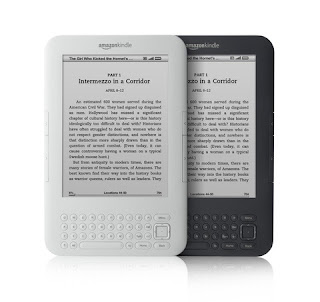Seemingly one of the most valuable uses of a tablet computer has only recently come into the consciousness of many consumers. Video conferencing, not available yet on Apple’s iPad (though highly likely on the 2011 iteration) and available in limited form on the Samsung Galaxy Tab, is making the rounds as the next big tool that all tablet owners should be oohing and ahhing over.
And recent news from the world’s largest video chatting service for consumers – Skype – has me thinking more about the role that video conferencing will actually have on the industry as a whole. Skype’s newest iteration on the iOS for iPad and iPhone now allows users to switch from audio only to video chat (iPhone only for now) and rumors of an Android powered version are strong and likely to come to fruition very soon, alongside the current Qik, OoVoo Mobile, and Fring video chatting apps for Android phones.
Some tablets and phones already offer native video chat. The iPhone’s big new feature in 2010 was Facechat – a real time video chatting tool that only worked between iPhone 4 owners on WiFi networks. It was good looking software but very limited by Apple and AT&T’s current partnership. However, Skype has found a way to circumvent that with their 3G enabled video chatting feature, quickly spreading on other phones, and likely to any tablets that offer a front facing camera.
This, of course, comes after Skype suffered severe outages, with nearly 40% of worldwide users suffering downtime due to a variety of bugs. We’ve learned since then that the outage was not caused so much by overload as by a bug in the newest software version of Skype, but the question still arises as to what the networks, including Skype can handle.
That will likely become less of an issue as Skype starts severely expanding its services in the next few months to handle the demand of mobile video chat. Additionally, we have companies like Verizon and Sprint rolling out their 4G networks already and others announcing 4G networks to come in 2011. To those 4G networks there are likely to go a number of new tablets, including the as-of-yet unannounced Motorola 4G tablet expected in Q2/Q3 in 2011.
To put things simply, video chat is a very important part of tablets. It just fits the needs of the format. Think about how small a phone is versus a 7 or 10 inch tablet, and yet how much more convenient a tablet is than a netbook or laptop when chatting at the airport or in a cab. I am not big on lofty predictions, but in 2011 I think we will see a huge surge of interest in front facing cameras, high speed mobile networks, and video chat, as well as all the secondary uses and ideas that go right along with the technology.
And recent news from the world’s largest video chatting service for consumers – Skype – has me thinking more about the role that video conferencing will actually have on the industry as a whole. Skype’s newest iteration on the iOS for iPad and iPhone now allows users to switch from audio only to video chat (iPhone only for now) and rumors of an Android powered version are strong and likely to come to fruition very soon, alongside the current Qik, OoVoo Mobile, and Fring video chatting apps for Android phones.
Some tablets and phones already offer native video chat. The iPhone’s big new feature in 2010 was Facechat – a real time video chatting tool that only worked between iPhone 4 owners on WiFi networks. It was good looking software but very limited by Apple and AT&T’s current partnership. However, Skype has found a way to circumvent that with their 3G enabled video chatting feature, quickly spreading on other phones, and likely to any tablets that offer a front facing camera.
This, of course, comes after Skype suffered severe outages, with nearly 40% of worldwide users suffering downtime due to a variety of bugs. We’ve learned since then that the outage was not caused so much by overload as by a bug in the newest software version of Skype, but the question still arises as to what the networks, including Skype can handle.
That will likely become less of an issue as Skype starts severely expanding its services in the next few months to handle the demand of mobile video chat. Additionally, we have companies like Verizon and Sprint rolling out their 4G networks already and others announcing 4G networks to come in 2011. To those 4G networks there are likely to go a number of new tablets, including the as-of-yet unannounced Motorola 4G tablet expected in Q2/Q3 in 2011.
To put things simply, video chat is a very important part of tablets. It just fits the needs of the format. Think about how small a phone is versus a 7 or 10 inch tablet, and yet how much more convenient a tablet is than a netbook or laptop when chatting at the airport or in a cab. I am not big on lofty predictions, but in 2011 I think we will see a huge surge of interest in front facing cameras, high speed mobile networks, and video chat, as well as all the secondary uses and ideas that go right along with the technology.









